Abstract
Four enteric viruses, poliovirus type 1, echovirus type 1, reovirus type 3, and simian adenovirus SV-11, were concentrated from seeded 1.3-liter volumes of raw, finished, and granular activated carbon-treated waters by adsorption to 47-mm-diameter (17 cm2), electropositive ( Virosorb 1MDS ) filters at pH 7.5 or electronegative ( Filterite ) filters at pH 3.5 with and without 5 mM added MgCl2, followed by elution with 0.3% beef extract in 50 mM glycine at pH 9.5. Removal of particulates from raw and finished waters by 0.2-micron prefiltration before virus addition and pH adjustment had little effect on virus concentration efficiencies. Soluble organic compounds reduced virus adsorption efficiencies from both raw and finished waters compared with granular activated carbon-treated water, but the extent of interference varied with virus type and adsorption conditions. For electropositive 1MDS filters, organic interference was similar with all virus types. For Filterite filters, organic interference was evident with poliovirus and echovirus, but could be overcome by adding MgCl2. Reovirus and SV-11 were not adversely affected by organics during adsorption to Filterite filters. Elution of reovirus and adenovirus was inefficient compared with that of poliovirus and echovirus. None of the three adsorption schemes ( 1MDS at pH 7.5 and Filterite with and without 5 mM MgCl2 at pH 3.5) could be judged superior for all viruses and water types tested.
Full text
PDF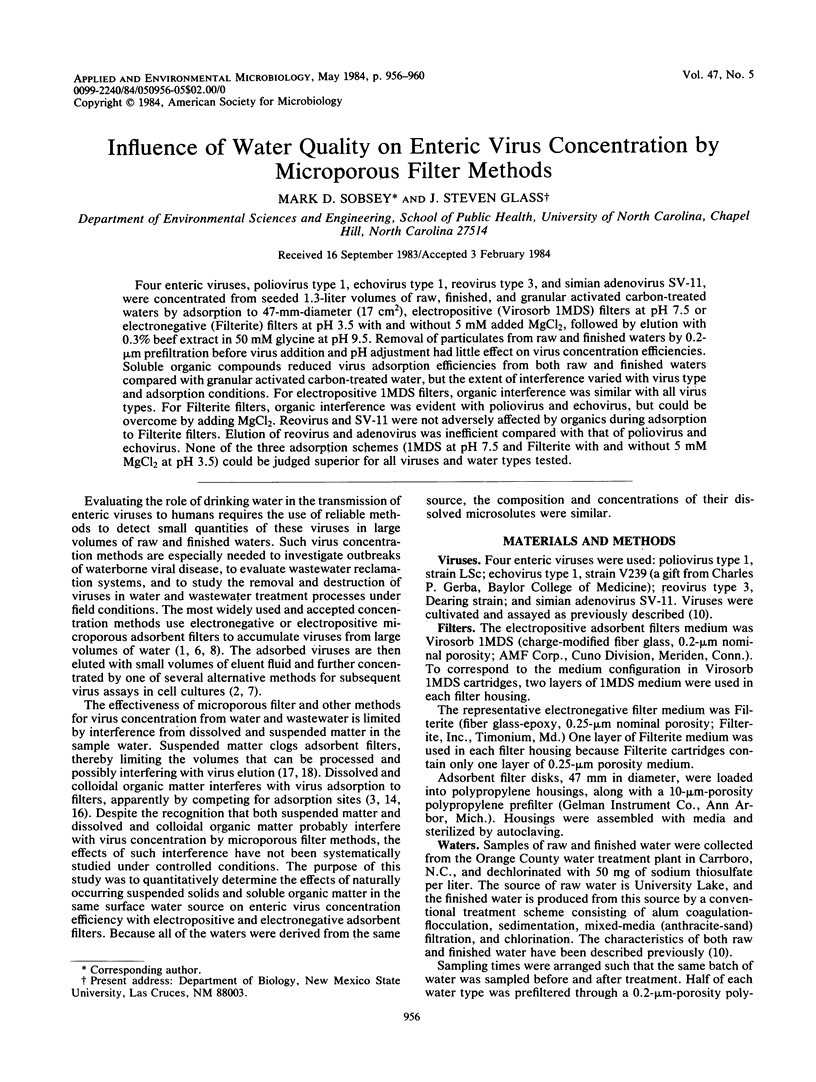
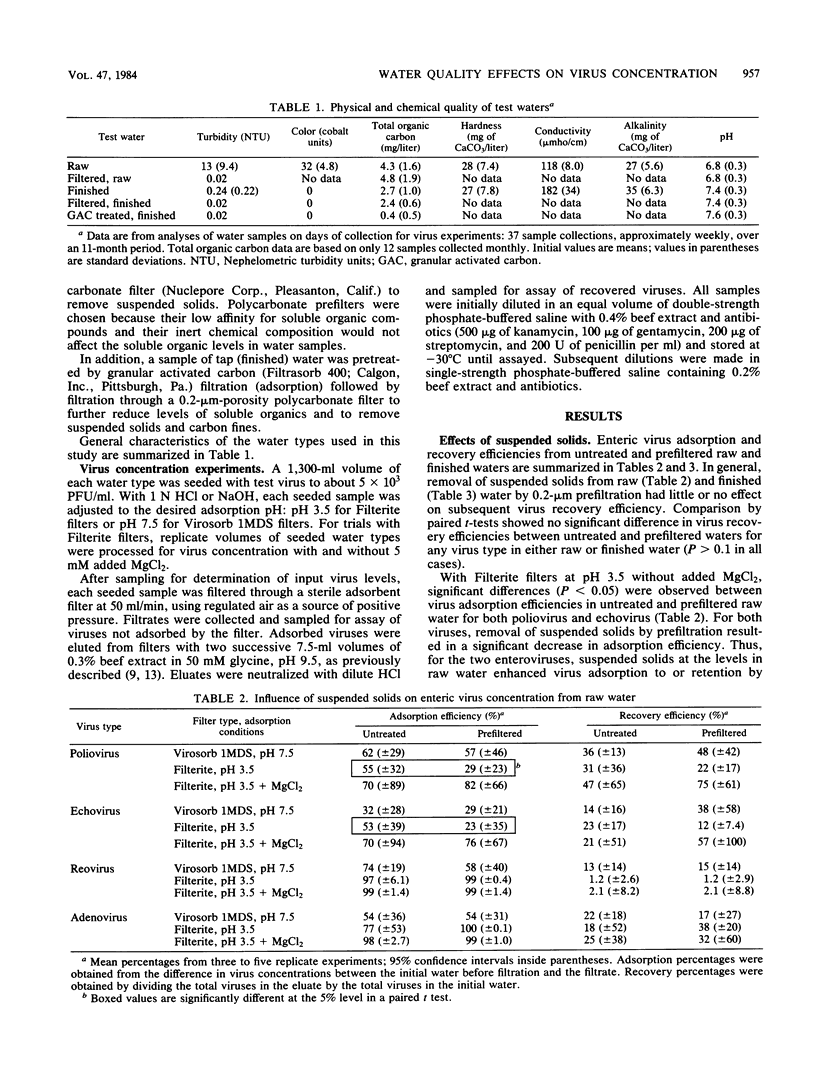
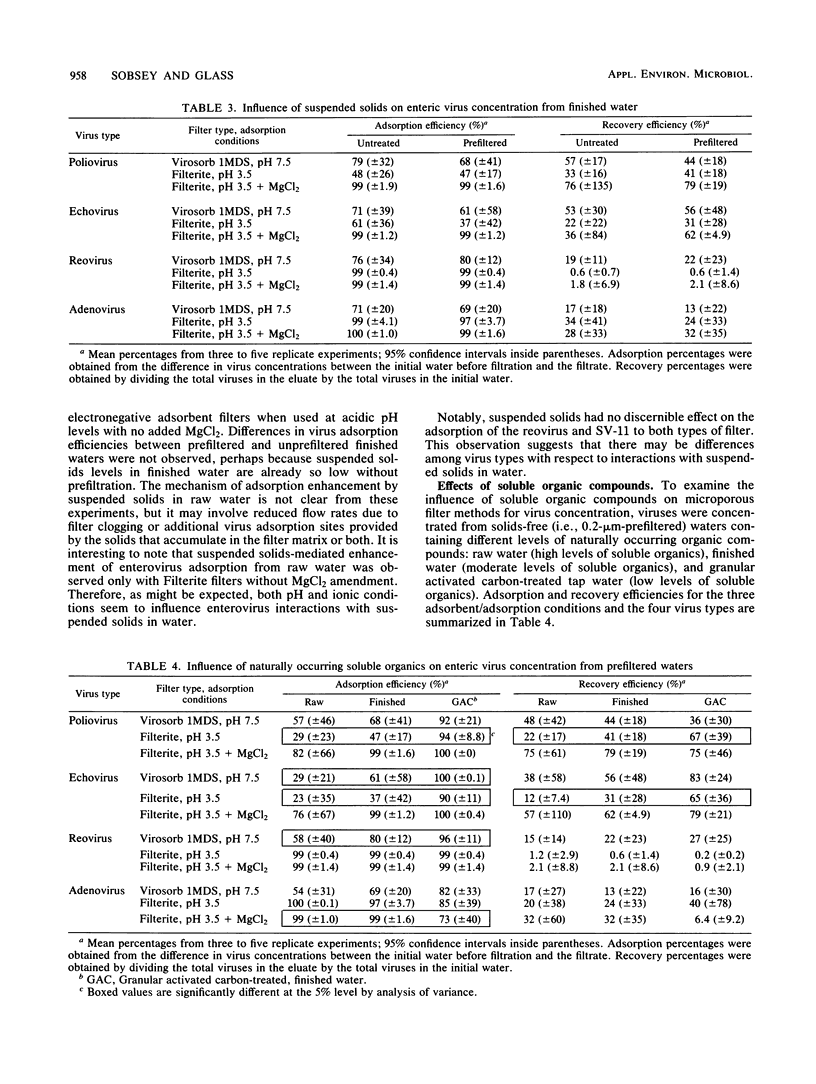
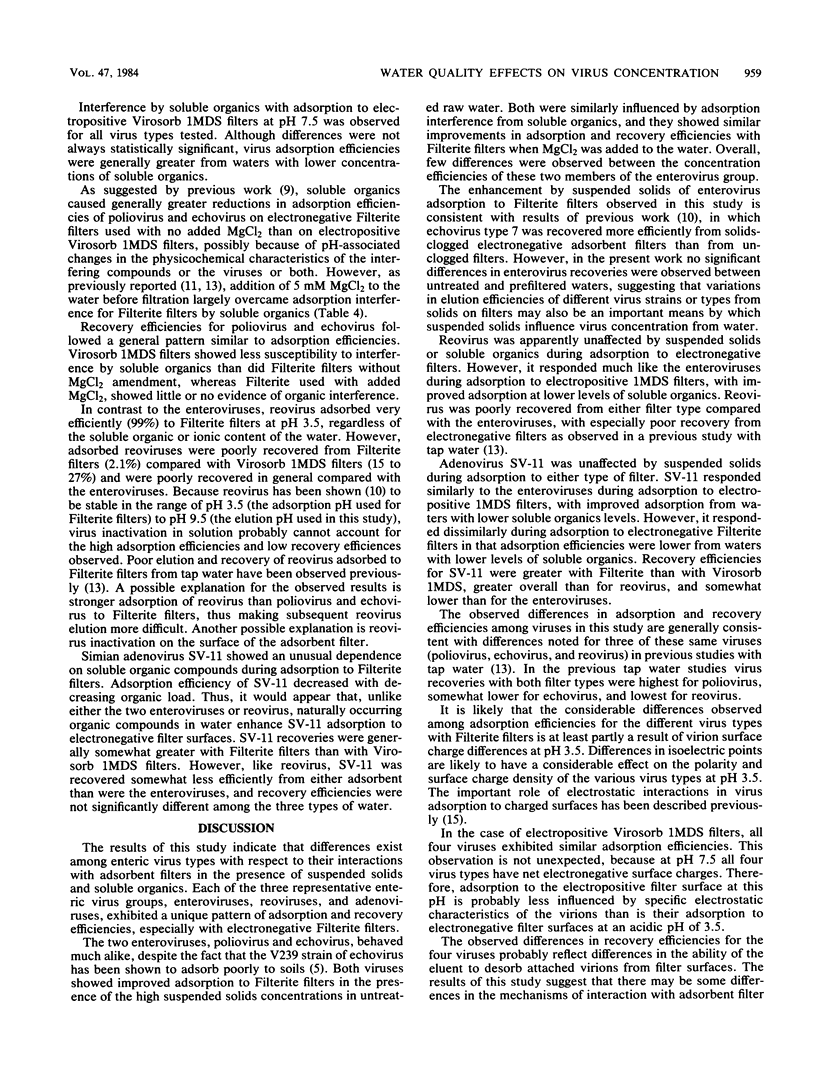
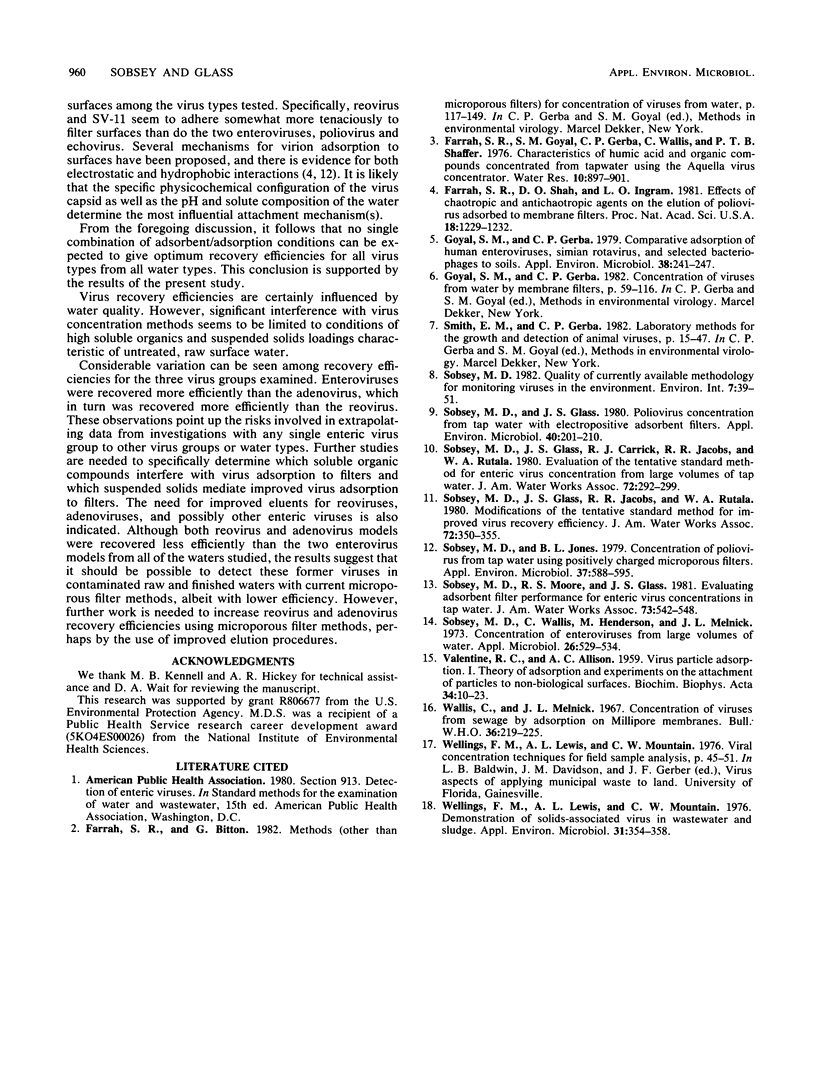
Selected References
These references are in PubMed. This may not be the complete list of references from this article.
- Farrah S. R., Shah D. O., Ingram L. O. Effects of chaotropic and antichaotropic agents on elution of poliovirus adsorbed on membrane filters. Proc Natl Acad Sci U S A. 1981 Feb;78(2):1229–1232. doi: 10.1073/pnas.78.2.1229. [DOI] [PMC free article] [PubMed] [Google Scholar]
- Goyal S. M., Gerba C. P. Comparative adsorption of human enteroviruses, simian rotavirus, and selected bacteriophages to soils. Appl Environ Microbiol. 1979 Aug;38(2):241–247. doi: 10.1128/aem.38.2.241-247.1979. [DOI] [PMC free article] [PubMed] [Google Scholar]
- Sobsey M. D., Glass J. S. Poliovirus concentration from tap water with electropositive adsorbent filters. Appl Environ Microbiol. 1980 Aug;40(2):201–210. doi: 10.1128/aem.40.2.201-210.1980. [DOI] [PMC free article] [PubMed] [Google Scholar]
- Sobsey M. D., Jones B. L. Concentration of poliovirus from tap water using positively charged microporous filters. Appl Environ Microbiol. 1979 Mar;37(3):588–595. doi: 10.1128/aem.37.3.588-595.1979. [DOI] [PMC free article] [PubMed] [Google Scholar]
- Sobsey M. D., Wallis C., Henderson M., Melnick J. L. Concentration of enteroviruses from large volumes of water. Appl Microbiol. 1973 Oct;26(4):529–534. doi: 10.1128/am.26.4.529-534.1973. [DOI] [PMC free article] [PubMed] [Google Scholar]
- VALENTINE R. C., ALLISON A. C. Virus particle adsorption. I. Theory of adsorption and experiments on the attachment of particles to non-biological surfaces. Biochim Biophys Acta. 1959 Jul;34:10–23. doi: 10.1016/0006-3002(59)90228-8. [DOI] [PubMed] [Google Scholar]
- Wallis C., Melnick J. L. Concentration of viruses from sewage by adsorption on millipore membranes. Bull World Health Organ. 1967;36(2):219–225. [PMC free article] [PubMed] [Google Scholar]
- Wellings F. M., Lewis A. L., Mountain C. W. Demonstration of solids-associated virus in wastewater and sludge. Appl Environ Microbiol. 1976 Mar;31(3):354–358. doi: 10.1128/aem.31.3.354-358.1976. [DOI] [PMC free article] [PubMed] [Google Scholar]


